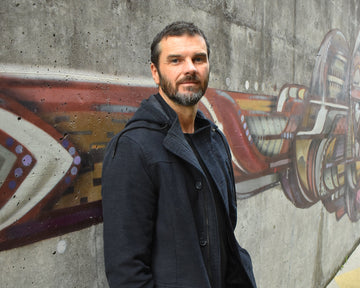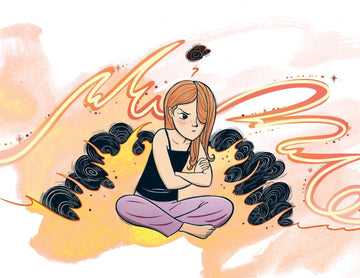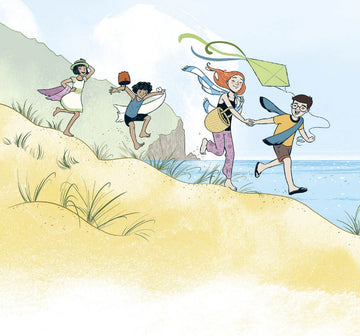I was a real wild child when I was young. My mother struggled to find any help for my outbursts. They seemed to be more extreme than other children. I would yell and scream, throw things and run away. My emotions were so big and out of control, and as a child, I had no idea how to manage them. I seemed to soak up emotions and they would build up inside me, only to explode when they became too much. My mother and I struggled through and slowly over time I learned to suppress or cover up my emotions, which was really hard for me. As the teenage years hit, my emotions would get the better of me and I’m not sure how I made it through. Finally, in my early twenties, things started to crumble, and I ended up in two years of intensive therapy to save my life. I don’t want my boys to experience this. There has to be a better way.
This is the quick version of my story. It was in therapy that I realised how useful so many of the skills and Wellness for Your Wildling techniques I was being taught were, and how helpful they would have been to me at a much earlier age. This is why we create books now about emotions, how to regulate and release them, and to normalise having conversations around how we feel. In each of the books we create, we try and share ideas or techniques that you can try, not only for yourself, as a parent, grandparent, carer, or teacher, but for you to share with the child or children in your life. Together we can change the way we process our emotions, instead of the old, ‘suck it up’, ‘get over it’ type of attitude. We can learn to label them, sit with them, then release the feeling in a healthy and safe way, so as to heal, learn and grow, instead of storing unresolved trauma within.
Just one of the things I learned about twenty years ago was the power of breathing. Deep breathing, also called belly breathing or diaphragmatic breathing, can help you calm down and bring your focus into the present moment. It is a simple, yet effective tool, that can take a person out of ‘fight or flight’ mode. The longer the exhale, the more relaxed you and your child will become, as it activates the vagus nerve, bringing a stillness and sense of peace back into the body.
With my middle son, who has autism, I would hold my hand up and signal to him to breathe. I would touch my thumb to my first finger, and we would take a long, deep breath together. I would then shift my thumb to the second finger, and we would take another breath, with a long, slow exhale out the mouth. We would continue until I got to my little finger and by then, we would have had four deep breaths and found ourselves both calmer and more relaxed. This was a really useful technique, as it was a great visual tool, combined with the breathing. As he got older I could simply hold up my hand or say, ‘breathe’ and he knew what to do. He was so familiar with the technique and the outcome and would always oblige.
Teaching a breathing technique to your child is providing them with a tool to use whenever they feel stressed. It can be used for a lifetime.
It empowers them with a method that they can call upon, so they can regulate themselves. The more you practice with your child the better the results. I now don’t even need to say, ‘breathe’ to my son, he uses it when he needs to. He regulates himself and it is wonderful as a parent to watch. On the next page are a few simple exercises you could start trying. See which one works best. You could incorporate a hand signal like I described, but it will depend on your child, and you know them best. If your child is having meltdowns, initially you could model the breathing. Invite them to join you. Often, they don’t want to but if you keep trying you will be surprised how they end up joining in. The more consistent you are, the better.
Download our FREE Breathing Exercises to Try & Windmill Template and get started with using breathing as a tool to manage big emotions and stress levels.




